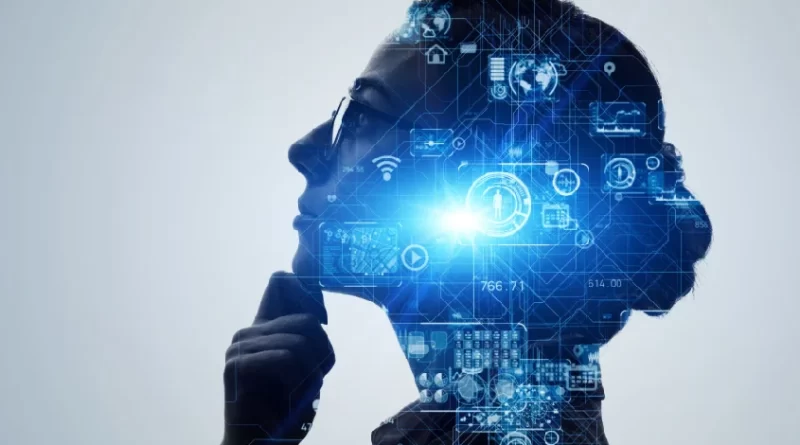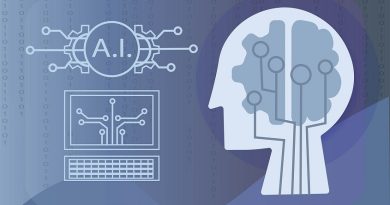The Future of Generative AI Beyond ChatGPT: A Glimpse into What Lies Ahead
The future of generative AI holds immense promise, reshaping industries and augmenting human creativity. Advancements in text, visual, audio, and design applications are expected. Ethical considerations must accompany responsible development to unlock a future beneficial for humanity.
The advent of generative tools like ChatGPT and Stable Diffusion has sparked widespread discussion about the future of artificial intelligence (AI). It is evident that this groundbreaking technology will profoundly impact our lives and work. A case in point is Octopus Energy, a UK energy provider, which now relies on AI to respond to a remarkable 44% of its customer service emails. Additionally, software firm Freshworks’ CEO has attested that tasks that once took eight to 10 weeks can now be accomplished within a matter of days, thanks to the integration of AI tools into their workflows.
However, we are merely scratching the surface of what lies ahead. In the coming weeks, months, and years, we can anticipate a rapid acceleration in the development of novel forms of generative AI. These advancements will enable AI systems to perform an expanding array of tasks, augmenting our skills across diverse domains. Some of these advancements may appear awe-inspiring to us today as the emergence of ChatGPT and similar tools did just a few months ago.
Let us now delve into the near future and explore the trajectory of generative AI, along with the tasks it is poised to assist within the not-too-distant future:
Advancements Beyond ChatGPT
Text-based generative AI has demonstrated impressive capabilities, especially in the realms of research, initial drafting, and planning. Some have enjoyed experimenting with it to generate stories or poems; however, it is apparent that it falls short of emulating the prowess of Stephen King or Shakespeare, particularly in generating original ideas. The forthcoming generation of language models, surpassing GPT-4, will delve deeper into understanding aspects like psychology and the human creative process. This deeper comprehension will empower these models to create written content that possesses greater depth and captivation. Additionally, we can anticipate the development of models that build upon the progress achieved by tools like AutoGPT. These advancements will enable text-based generative AI applications to generate their own prompts, thereby facilitating the execution of more intricate tasks.
Generative Visual AI
Apart from generating text, contemporary generative AI technology exhibits commendable proficiency in producing images based on natural language prompts. Some tools have even ventured into generating videos. However, due to the resource-intensive nature of data processing, there are certain limitations. As this domain of generative AI continues to evolve, we can expect the process of generating images and videos depicting virtually anything to become increasingly effortless. Consequently, it may become challenging to discern between generative AI content and reality. This scenario raises concerns, as it may lead to issues such as the manipulation of visual media (deepfakes), thereby fostering the proliferation of fake news and disinformation.
The Role of Generative AI in Shaping the Future of the Metaverse
The digital realm is undergoing a transformative shift in the way we interact with information and connect with one another. Anticipating this evolution, numerous predictions emphasize the emergence of immersive 3D environments and experiences facilitated by virtual and augmented reality (VR/AR). Significantly, generative AI, an advanced technology, is set to expedite the design and development of these virtual realms. This innovative approach holds the potential to revolutionize Meta’s (formerly Facebook) 3D world platforms. Furthermore, generative AI is paving the way for the creation of realistic avatars, breathing life into these digital environments and enabling dynamic actions and interactions with fellow users.
Generative AI: Revolutionizing Audio, Music, and Voice
Remarkably, AI models are already demonstrating remarkable capabilities in generating music and imitating human voices. The integration of generative AI is poised to become an invaluable tool for songwriters and composers, offering novel compositions that inspire creativity and encourage musicians to explore new artistic avenues. Additionally, real-time adaptive soundtracks are likely to become more prevalent, enriching experiences in video games and accompanying live footage of real-world events such as sports. As AI voice synthesis advances, computer-generated voices are approaching the expressive qualities, intonation, and emotional range of human voices. This breakthrough will unlock a multitude of possibilities, including real-time translation, audio dubbing, and automated voiceovers and narrations.
Generative Design: Empowering Creativity in Product Development
Designers are increasingly harnessing the power of AI to facilitate the prototyping and creation of diverse products. Generative design, an AI-driven process, is empowering designers to streamline their workflow. By inputting material specifications and desired product properties, designers can leverage algorithms to generate comprehensive step-by-step instructions for engineering the final product. Airbus engineers have already experienced the benefits of such tools when designing interior partitions for the A320 passenger jet. Notably, their adoption of generative design resulted in a remarkable 45% reduction in weight compared to human-designed partitions. With this success, it is foreseeable that more designers will embrace these AI-powered processes, facilitating the creation of increasingly intricate objects and systems.
As the digital landscape evolves, generative AI is set to revolutionize various aspects of our lives. In the Metaverse, this technology will facilitate the creation of immersive 3D environments and lifelike avatars, enabling dynamic interactions and experiences. In the realms of audio, music, and voice, generative AI will inspire musicians with novel compositions and elevate the quality of computer-generated voices. Furthermore, generative design holds immense potential for designers, empowering them to create complex products more efficiently. By embracing these advancements, we pave the way for a future where AI becomes an integral part of the creative process, driving innovation and transforming the way we interact with the digital world.
The Impact of Generative AI on Video Games
The application of generative AI has the potential to revolutionize the landscape of video game design, development, and player experience. Game designers can leverage this technology to enhance their creative process and construct captivating virtual environments that challenge players. By training AI algorithms to generate landscapes, terrains, and architectural structures, designers can save valuable time that can be allocated towards crafting engaging narratives, intricate puzzles, and innovative gameplay mechanics. Furthermore, generative AI enables the creation of dynamic content, such as non-player characters (NPCs) that exhibit lifelike behaviors and interact with players in a manner akin to human, orc, or alien interactions, transcending the limitations of scripted responses. As game designers become proficient in integrating generative AI into their workflows, we can anticipate the emergence of games and simulations that dynamically respond to players’ actions, reducing the reliance on predetermined scenarios and challenges. This advancement holds the potential to deliver gaming experiences that surpass the immersion and realism offered by even the most cutting-edge games available in the present day.
As we reflect on the current capabilities of generative AI, such as ChatGPT, it becomes evident that we are merely scratching the surface of its potential. The future of generative AI holds exciting possibilities that extend far beyond chat-based applications. The advancements in this field are poised to reshape numerous industries and domains, from healthcare to art, finance to gaming, and beyond. The ability of generative AI to create realistic and imaginative content, coupled with its capacity to adapt and learn from data, opens doors to endless opportunities.
Looking ahead, we can anticipate generative AI becoming an integral part of our daily lives, assisting in tasks such as content creation, product design, personalized recommendations, and decision-making processes. The ability to generate lifelike images, videos, and music that resonate with human creativity will blur the line between human and AI-generated content.
Moreover, generative AI has the potential to contribute to scientific advancements, enabling researchers to explore complex datasets, simulate experiments, and generate novel hypotheses. It can aid in the discovery of new drugs, optimization of energy systems, and understanding of intricate phenomena that were previously beyond our grasp.
However, with these advancements come ethical considerations. As generative AI becomes more powerful, we must ensure that it is used responsibly and with transparency. Safeguards need to be in place to prevent misuses, such as the creation of deep fakes or the proliferation of biased and harmful content. Ethical frameworks and regulations will be crucial to navigate the uncharted territories that lie ahead.
In conclusion, the future of generative AI holds immense promise and potential. It will reshape industries, augment human creativity, drive scientific progress, and transform the way we live and work. As we venture into this exciting frontier, it is essential to embrace responsible development and foster collaboration between humans and AI, leveraging the best of both worlds to unlock a future that is both remarkable and beneficial for humanity.




